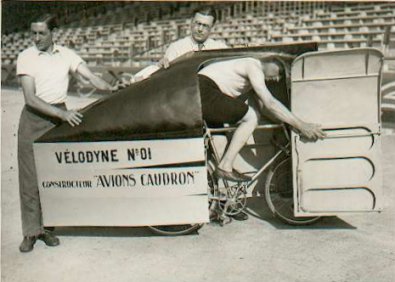|
Please bear with us while we have a moan about rubbish bikes and poor shops. (On the other hand you could always skip the next few paragraphs and make a cup of tea instead!).
Here goes...
In the era of the bike-in-a-box from the local supermarket/ toy shop/mail-order/internet/car boot sale etc. etc. we actually take pride in being a little bit different to the mainstream. We will give you sensible, honest advice and if you just want a little chat to help understand the differences between all the bikes then that is fine by us.
We will NEVER sell you a bike without thoroughly assembling and adjusting it to make sure it is completely ready to ride. When you look on a bike box you'll often see a drawing of two or three everyday tools supposedly needed for assembly, the implication being that building the bike up is really no more difficult than putting together a bit of flat pack furniture. The reality is that most people will not be able to set up the bike properly, even if they spend all day on it. Most bikes are about 80% or 90% assembled before they are boxed up, but they are often put together very quickly on the production lines. You can find numerous components wrongly adjusted, incorrectly fitted and of course sometimes damaged in transit. We will typically spend one and a half hours setting up a new bike, and we have spent our lives learning the cycle mechanic's craft!
At the top quality end of the market some of the models can be extremely high-tech and need very careful setting up and fine tuning.
Cheaper bikes are not so high-tech, but because the components are not such high quality they can sometimes take longer to adjust up properly.
At the popular, high-volume, cheap end of the market there is, sadly, a downward trend in quality as the brands battle it out on price, and all the mechanic's skills are needed to make them good. Often the quality of some of the components, for example the brakes, is so poor that it is actually impossible to adjust them properly. Another problem can be the fitting of incompatible parts, for example a gear lever and a gear mechanism that were not designed to be fitted together on the same bike. Again, it will be impossible to make the gears work properly without changing one of them.
The cheapest bikes are so bad that they cannot be made good however long a mechanic spends on them. We will NOT stock and sell this cheap rubbish. Unfortunately there are a lot of shops out there that will sell almost anything if they think it will make them some money. The really cheap bikes are usually sold in a box or thrown together by a youngster who hardly knows one end of a spanner from the other. It is not viable for a skilled man to spend his time on a bike that sells for £199. The equation simply does not work.
Some of the major high street chains are also prone to selling the rubbish bikes. Their mechanics (assuming they actually have any) would probably rather not touch them, but such things as stocking policy are decided by management executives in head office, not by the poor unfortunates who have to sell the bikes and deal with all the complaints afterwards!
We avoid stocking any bikes of dubious quality, but our crystal ball isn't always spot-on, and occasionally we will have problems. If we do have problems with a bike, but we know we can fix it, we will persevere and make it good. If we can't, then we will send it back to the manufacturer. If we get repeated problems like that we will stop stocking that model and even the whole brand if necessary.
Whatever the quality of the bike, a lot of shops are careless about their bike builds, either because their mechanics are not skilled enough, or because the management puts pressure on the mechanics to rush the bikes through the workshop quickly. What could actually be a very good bike can be let down by bad work in the shop. This is why we say that where you buy is just as important, possibly even more important, than what you buy.
OK, end of the rant. Thanks for putting up with it!
So, back to............
Choosing a Bike
To E or not to E, that is the question.....
This "Choosing a Bike" section used to start with the decision between Mountain, pure Road or all the bikes somewhere between, such as Hybrids.
We think now the first question for many people is whether to go Electric...
E-Bikes have been massively popular in some European countries such as Germany and Holland for many years, but the UK has lagged far behind.
At Stanley Fearn's we've been stocking a small number of E-bikes, on and off, for over twenty five years, but there has been a massive improvement in technology over the last 5 years,
with motors and particularly with modern lithium batteries being far superior to earlier offerings.
E-Bikes are now the biggest part of our business.
So, should you go Electric ? There are several categories of E-bikes out there, just as there are several categories of non-electrics.
At the most aggressive end of the spectrum we have sporty adults riding Full-Suspension Mountain E-bikes very fast over very rugged terrain - they don't in any way "need" an electric bike but just have them for the thrill of it, being able to tackle tricky uphill sections at speed as well as downhills.
Now, to be honest, those riders aren't likely to be reading this section - they already know what they want in a bike ! So we're aiming this
at everyone else, ie people who would appreciate a bit of help with the Derbyshire hills !!
If you do go electric, at some point, as sure as eggs is eggs, you'll get some old-school cyclist saying "Huh, that's not proper cycling !"
Just ignore them. They think that because the bike's electric that you don't do any work, but the thing is that you can choose how hard to work yourself. E-bikes have typically 4 different levels of assistance to choose from, or you can ride completely under your own steam. In the assistance modes you still have to pedal yourself,but the modes vary from slight assistance to massive. For instance with our most powerful bikes, powered by the Bosch CX motor, if you select "Turbo" mode, unless you are very unfit you should be able to go up any Matlock hill without any discomfort. You might, on the other hand, choose a less powerful mode, work yourself harder,
and conserve battery power at the same time.
So, how much will it cost ?
You will see E-bikes advertised below £1000, sometimes well below.
The common theme with these is they are usually sold online, and not sold by a truly established, reputable cycle company. It's remarkably easy to think up a brand name, set up a slick, very plausible looking website and spin a few yarns about your product...
SPEED-E-BIKE
The UK's leading E-Bike manufacturer.
Designed and built in the UK.
No-nonsense warranty.
Full service back-up.
Go on, pick the fib. ( trick question - every claim is pure tosh ).
SPEED-E-BIKE is our invented name of course - if there really is such a company out there we're very sorry.
I'm sure you'll let us know !!
By and large with bikes, as with most things, you pretty much get what you pay for -
An E-Bike from a well established,
high quality cycle company, fitted with premium quality electrics such as Bosch, is likely to cost over £2500.
We did want a cheaper alternative to these, and spent some time researching companies before settling on the Wisper brand.
We got good feedback on Wisper's reliability from friends in the trade,and have now been selling them for over 7 years.
They have proven themselves to be reliable, good value for money bikes.
How far can I get to a battery charge ?
As you'll have already guessed, this largely depends on how hilly your route will be, and how much assistance you need from the motor.
With bikes such as Trek Powerflys with 500Wh batteries, we commonly hear customers say they've done a hilly 40 miles and still had good power left.
With a 625Wh battery the sime rider would get 50 miles.
We do have one customer who gets over 100 miles to a charge, but she rides mainly on the flat, is quite light weight and doesn't need to use high power settings, so this is certainly not the range an average rider could expect on a hilly route !
How much will a new battery cost ?
A top quality, large capacity lithium battery will probably be £600 or more.
This sounds scary, but in all probability the battery will give you many years of good use.
Bosch and Shimano give a 2 year warranty, and it has proven a very rare thing for our customers to buy a new battery before they are 5 years old.
Lithium batteries lose some capacity through age, and some every time they are charged. As they degrade
they won't suddenly "die" - you should still have good power up the hills, but you won't be able to do as long a ride before the battery goes flat.
If you were to have a piggy-bank and put £1 in every time you went for a ride,
you'd more than likely pay for a battery and have money spare.
Our E-bike customers seem to be a happy lot. They love their bikes. Time and time again we hear people say they use the bike even more than they ever expected to !
Choosing a Bike - Mountain, Road or Hybrid ?
And why does that saddle look so uncomfortable ?!!
It must be said, we do change a lot of saddles on new bikes.
You can pick a comfier one before you take the bike, if you think the original looks like a torture weapon !
Hybrids
For many of our customers, a Hybrid is the perfect bike - ideal for the converted rail tracks such as the High Peak Trail and Monsal Trail,
but equally at home on tarmac roads.
They have low gearing and powerful brakes, but are not as heavy as a mountain bike, and roll along more easily with their thinner tyres.
As with Mountain Bikes, they have straight handlebars, but they tend give you a more relaxed, upright riding position.
Some will have suspension forks and some will have traditional rigid ones.
The suspension fork gives you more comfort and control on poor surfaces but is heavier, so if your riding will always be on well maintained surfaces you don't actually need a suspension fork.
Terminology can be confusing, because although "hybrid" is a term universally used in UK shops,
the manufacturers usually choose a different same, such as "city" or with some US brands,"pavement" ( It has a different meaning over there )
To see our range of hybrids, please click onto
Hybrid and Straight-Bar Road
Mountain Bikes
If some of the newspaper adverts are to be believed you can buy
a mountain bike for £199. - You know the sort of thing....."Effortlessly ride up any hill with
these 18 speed mountain bikes" etc. etc. On the other hand you can see bikes for sale at over £4000.
We'll try to help you through the mountain bike maze......
Budget BikesAvoid the £199 bike. If you read our opening paragraphs you'll know what we think about them!
The PriceMost people in the cycle trade regard £800 as roughly the price at which you get a
non-electric mountain bike which has both the strength and lightness to be considered for regular off-road usage. On
the other hand, if you don't mind a heavier bike, and don't expect too much refinement in the general
componentry you can get some good value for money bikes below £500, but they will not stand the
hard riding that the dearer bikes will take.
SuspensionBack in the early days of mountain bikes, suspension front forks used to be a luxury that only appeared on top grade machines,
but have become so affordable that they now come as standard equipment on nearly all bikes. They make the ride more comfortable and let you go faster
over rough ground.
And you can have rear suspension, too. This used to be seriously expensive but can now be found on bikes below £500.
With all suspension, though, whether front or rear, you can reach a point where in an effort to
keep the cost down, the suspension is of such poor design that its minus features outweigh any
advantages and it is then not worth having at any price. Generally speaking, cheap full suspension bikes are extremely heavy. The rear suspension can be very crude, and it can also be of an unservicable design. We don't recommend this type of bike, and we actually stock very few full suspension bikes below £2000.
At Stanley Fearn's
we will not stock bikes of dubious quality, and we will be honest about the limitations of
our cheaper models.
Before you see our mountain bike ranges , a bit of terminology needs to be explained.....
HardtailOriginally from the States, this name refers to any bike without rear suspension.
Click here to see our bikes, either HARDTAIL or FULL SUSPENSION.
Road Bikes
Just as new categories of off-road bikes have appeared in recent years, so we have gained more categories of road bikes, too:-
Dropped handlebar racing bikes
At their lightest, modern road bikes are pure, tarmac-only, drop-bar speed machines, such as you will see with our Trek Emonda bikes. These bikes will not carry luggage, and cannot accomodate full-length traditional mudguards, but they are very, very light and very, very fast!
(The cheapest of our Trek road bikes,the Trek Domane AL2 and AL3 are an exception to the rule as regards mudguards and luggage,because they have been designed to accomodate these.)
Quite a few of our mountain bike customers own a drop-bar racing bike too, and enjoy the total contrast in styles that they get from the two bikes.
Gravel bikesThe GRAVEL BIKE is probably the most interesting, and certainly the most successful entrant into the drop-bar scene for many years.
This new kid on the block combines the comfort of an urban-style racer with the off-road capability of a Cyclo-Cross bike.
They have much fatter than normal tyres ( typically around 38mm wide, rather than the usual 23mm or 25mm ), have loads of space for mudguards,
take luggage racks easily and have nice low gears and really powerful brakes.
They are heavier than a pure road bike but they are very versatile mahines indeed !
Lightweight, straight-bar road bikes
For riders who don't particularly want the head-down, drop-bar riding position, and who would welcome the potential for better mudguards and possibly some luggage, then the new breed of lightweight straight-bar road bikes may be the perfect answer.
|






